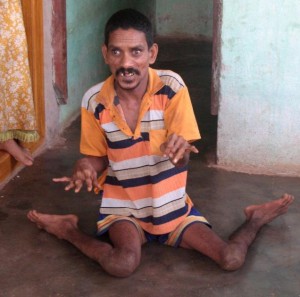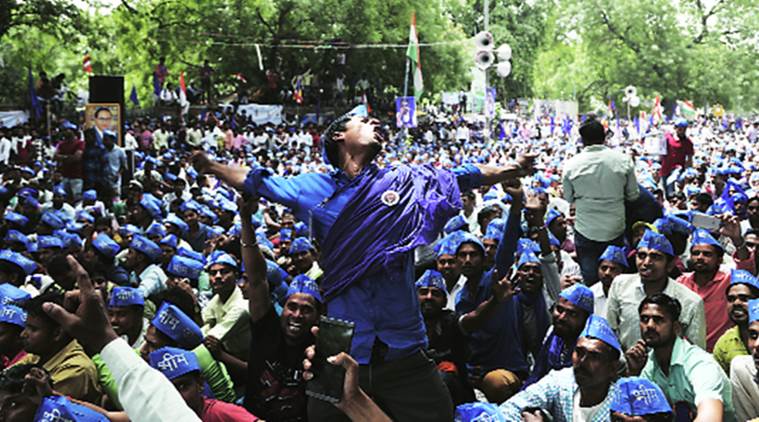Endosulfan: Government and the Pesticide Industry Orchestrating Genocide
 On May 13th 2011, the Supreme Court (SC) banned the use, sale, production and export of the pesticide endosulfan throughout the country, citing its harmful effects. For more than two decades now, several organizations and concerned individuals have been waging a protracted battle demanding this ban, and the SC verdict is an important step forward in their struggle. This battle has not just had to contend with the powerful pesticide lobby, but also with various governments who have repeatedly tried to protect corporate interests over concerns of health and safety of millions of people. However, the battle is unfortunately far from over: according to the SC verdict, the ban will remain effective till the time a joint committee (formed under the aegis of the Indian Council of Medical Research and the Agriculture Commissioner) submits its report to the court about the harmful effects of this widely used pesticide. Given the track record of the state machinery and government institutions of pandering to corporate interests, there is every reason to remain skeptical of what this joint committee appointed by the UPA will recommend. If the ICMR gives a clean chit to endosulfan, the ban imposed by the SC will be lifted.
On May 13th 2011, the Supreme Court (SC) banned the use, sale, production and export of the pesticide endosulfan throughout the country, citing its harmful effects. For more than two decades now, several organizations and concerned individuals have been waging a protracted battle demanding this ban, and the SC verdict is an important step forward in their struggle. This battle has not just had to contend with the powerful pesticide lobby, but also with various governments who have repeatedly tried to protect corporate interests over concerns of health and safety of millions of people. However, the battle is unfortunately far from over: according to the SC verdict, the ban will remain effective till the time a joint committee (formed under the aegis of the Indian Council of Medical Research and the Agriculture Commissioner) submits its report to the court about the harmful effects of this widely used pesticide. Given the track record of the state machinery and government institutions of pandering to corporate interests, there is every reason to remain skeptical of what this joint committee appointed by the UPA will recommend. If the ICMR gives a clean chit to endosulfan, the ban imposed by the SC will be lifted.
The history of the use of endosulfan in India is a tragic one: the Plantation Corporation of Kerala (PCK) started trial spraying of endosulfan in the cashew plantations of Kasargod in 1977-78. From 1981, the PCK started regular spraying of Endosulfan two to three times a year. And over 20 years of aerial spraying of this highly toxic pesticide on cashew plantations in Kerala and Karnataka has left many with mental and physical disorders. Victims suffer from horrific congenital deformities, physical disabilities, mental retardation and a range of gynaecological problems. According to a estimate issued by several organisations and concerned individuals, more than 9000 victims of endosulfan have been identified in Kasargod district of Kerala alone, out of which over 4800 patients are bedridden. Over thousand victims of endosulfan have already died in this district. Similar effects are also being witnessed today in Idukki and Palakkad districts of Kerala, as well as in Dakshin Kannada, Kodagu and Udupi districts of Karnataka.
 The concern related to the health and environmental impacts of endosulfan is not new. Way back in 1991, the Ministry of Agriculture constituted a high-powered committee (known as the Banerjee Commission) to review whether endosulfan should be continued to be used in India. This pesticide is so toxic, and its impacts so well documented that as many as eighty one countries have already banned its manufacture and use. Why then was this highly toxic pesticide allowed to be extensively used for several decades? The story of the use of endosulfan in India is also a story of how an unholy nexus between government institutions and profit-hungry corporations cynically sacrificed the lives and the health of hundreds of people, by flouting every democratic norm.
The concern related to the health and environmental impacts of endosulfan is not new. Way back in 1991, the Ministry of Agriculture constituted a high-powered committee (known as the Banerjee Commission) to review whether endosulfan should be continued to be used in India. This pesticide is so toxic, and its impacts so well documented that as many as eighty one countries have already banned its manufacture and use. Why then was this highly toxic pesticide allowed to be extensively used for several decades? The story of the use of endosulfan in India is also a story of how an unholy nexus between government institutions and profit-hungry corporations cynically sacrificed the lives and the health of hundreds of people, by flouting every democratic norm.
To begin with, in 1991 itself, the Banerjee Commission recommended that the spraying of endosulfan should not be allowed in areas where water bodies exist. However, endosulfan continued to be sprayed in Kasargod where 13 rivers and many other water bodies existed. Moreover, spraying of endosulfan was done without the mandatory permission from the Civil Aviation Department; even the Central Insecticide Board has testified in the Kerala High Court that the spraying took place illegally.
Secondly, successive governments and several government institutions (including various departments of the state and central governments as well as state-run educational and research institutions) repeatedly worked to shield the pesticide lobby and cover up the harmful impacts of endosulfan. For instance, the central government had accepted the reports of the O P Dubey committee and the C D Mayee committee – both of which had given a clean chit to endosulfan, despite the fact that several groups and individuals had questioned the recommendations and findings of these committees. It has repeatedly been pointed out that these reports were manipulated and facts distorted to defend the use of endosulfan.
For the past many years, the pesticide industry had resorted to virulent slander campaigns and bullying tactics against all those who raised their voices against endosulfan. Surrendering to this influential lobby, the Indian government has consistently been opposing a global ban on endosulfan. At the recent UN conference in Stockholm, the Indian government, bowing down to an international outcry against endosulfan, grudgingly accepted that this pesticide is harmful and should ultimately be banned. However, once again protecting corporate interests, the UPA has asked for ‘exemptions’ for endosulfan to be used on 16 crops (including cotton, tea, rice, wheat and mango)! Therefore, if the ICMR decides that endosulfan is safe for use, India can continue to use endosulfan for many more years.
It is high time now that the use and manufacture of endosulfan is permanently banned. As a result of spirited movements in Kerala and Karnataka against endosulfan, the state governments in these states have finally banned the use of endosulfan. But it is now necessary to push for a country-wide ban. Also, criminal prosecution should be taken against the corporate as well as the central and state government authorities who were responsible several deaths and disaster due to the prolonged use of endosulfan.

We need an Erin Brokovich here. These greedy corporates and their main executives need to be severely penalised – the corporate with a hefty fine totalling at least 50% of their net worth and their executives with 5-10 year jail sentences. Only then will justice be done